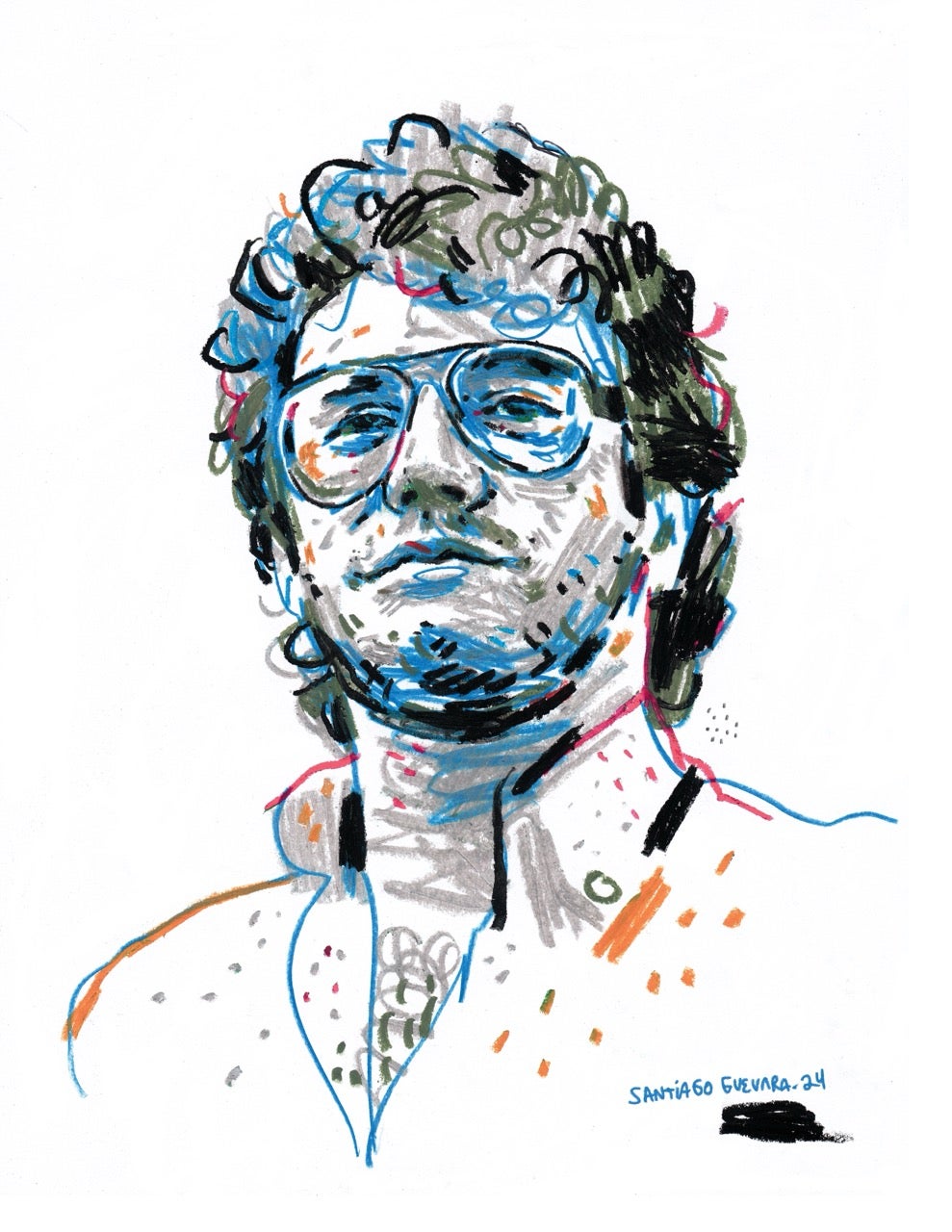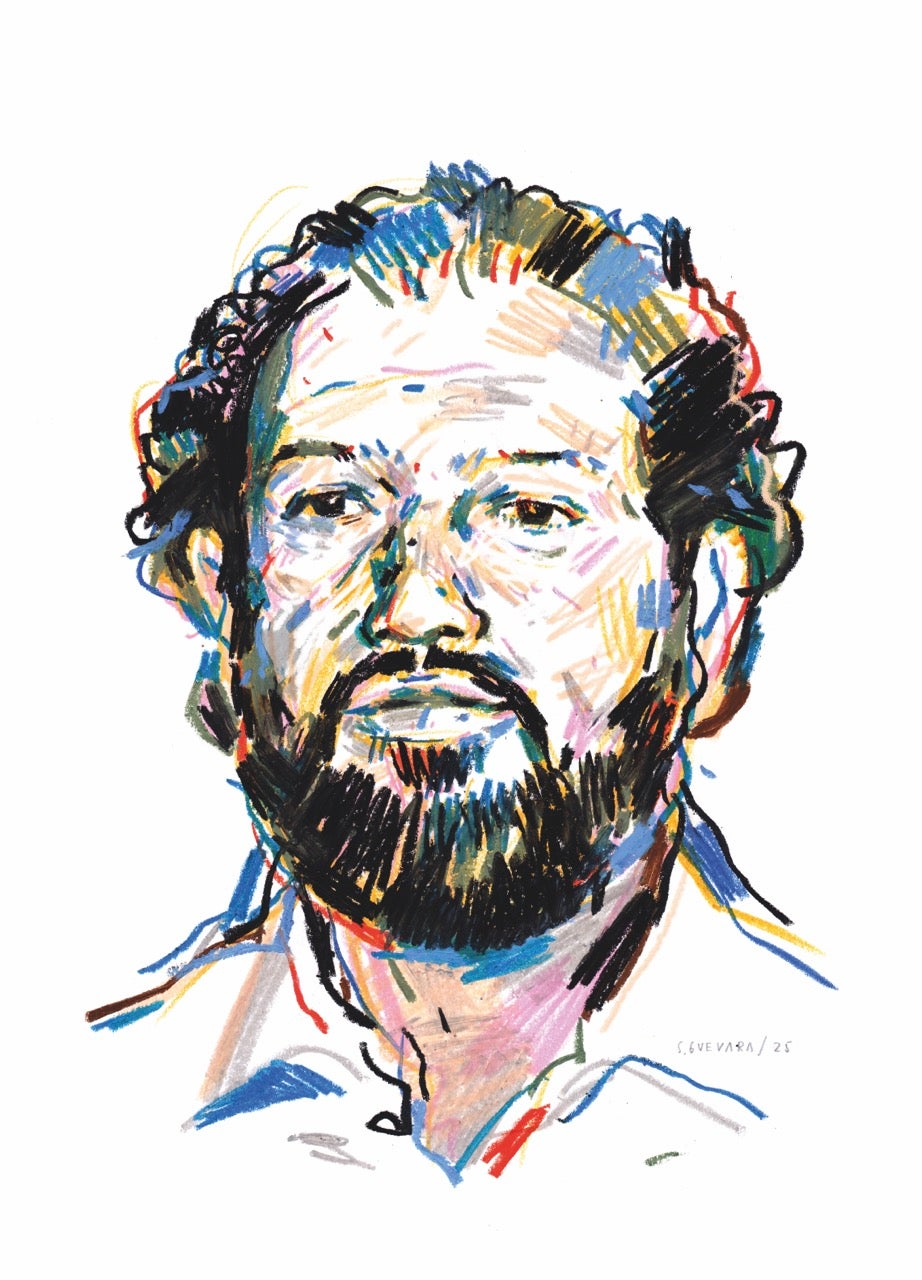Without intending to, Daniel Chaparro Díaz has dedicated a large part of his professional life to reconstructing the memory of violence – in particular, against murdered journalists – in Colombia.
For him, it’s also a personal journey.
He was just eight years old when his father was killed by guerrilla members in the Antioquia department of Colombia.
It was April 24, 1991. Journalist Julio Daniel Chaparro, 29, and photojournalist Jorge Enrique Torres Navas had arrived in the municipality of Segovia to cover a massacre that occurred there a few years earlier. They were working on a series of crónicas – a blend of journalism and literature – for newspaper El Espectador. The ominous title: "What Violence Took Away.”
Members of the National Liberation Army (ELN, for its acronym in Spanish) killed both men.

Colombian journalist Julio Daniel Chaparro. (Credit: Santiago Guevara/ Courtesy FLIP)
More than three decades later, on July 27, 2025, Colombia recognized its responsibility for failing to prevent, investigate and punish the murders of the two journalists.
“We recognize that for decades this crime remained unpunished, denying justice to their families, their colleagues in the press, and all of Colombian society,” said Yannai Kadamani Fonrodon, minister of Culture, Arts, and Knowledge.
The recognition is part of a friendly settlement agreement signed by the State, the victims and their representatives before the Inter-American Commission on Human Rights (IACHR). Chaparro Díaz emphasizes that more than fighting for convictions against those responsible, the agreement allows the memory of his father and Torres Navas to be restored.
"The measures included in the friendly settlement are not done exclusively for the families, nor designed for the families, but rather for how we remember these two journalists who were murdered, how we contribute to enabling new generations to continue pursuing projects based in photojournalism and crónica," Chaparro Díaz told LatAm Journalism Review (LJR).
In 2019, Chaparro Díaz joined the Foundation for Press Freedom (FLIP), where he is currently a senior advisor. Part of his work is dedicated to ensuring that Colombian society remembers the violence that claimed the lives of journalists in the country. One of the projects he coordinates is the virtual Museum of Journalism Memories in Colombia.
“[The museum] is a starting point that hopes to motivate reflection on the past and present of freedom of expression in the different regions of the country and contribute to an understanding of the internal complexities that such a history entails,” the project website says.
In three large exhibits, the museum tells the stories of journalists and media that marked the profession in the country. For Chaparro Díaz, they are also part of a journey to reconstruct the memories that are taken away when journalists, like his father, are killed.
Chaparro Díaz's memories of his father are few and far between, and over the years they have "faded away."
Growing up, he heard the happy parts of his father's story, always aware that he had been murdered.
“I grew up in a house where anecdotes were the preferred way to tell what had happened to my father, to the brother, to the son, to the husband, to the friend, to the cousin,” he said.
Despite coming from a family of journalists –his father and grandfather were in the profession– Chaparro Díaz took a different route in college and pursued history and political science. It was in his later years of study that he began working with memory.
One of his friends, the son of a disappeared human rights defender, invited him to join a group called "Sons and Daughters for Memory Against Impunity." There, he began to ask other kinds of questions, like who his father was and what happened to him.
He noticed that while other children in the group were very clear about their parents' political histories and careers, Chaparro Díaz knew where his father liked to dance salsa, what team he supported, what food he liked, and what his jokes were like.
“All the other information that other people didn't have and didn't prioritize,” he said.
“I started to wonder a lot more, not so much about my father's political horizons, but about what had happened, who was responsible for his murder,” he continued.
Eventually, while working at what is now the National Center for Historical Memory and pursuing a Master's degree, his boss and thesis advisor suggested he write about another massacre that had occurred in Segovia. It was a place he knew nothing about, except that it had been the scene of the murder of his father and his colleague years before.
Investigating the 2002 massacre was quite difficult, Chaparro Díaz recalls. The residents seemed unwilling to talk about the subject, a memory he calls “subterranean.”
“There, I kept thinking about how the memory of my father was formed in my house,” he said.
That's why his thesis ended up being an autobiographical one, analyzing how the memory of the recent violence in Segovia and the memory of Julio Daniel Chaparro were formed.
“He really dazzled me. I ended up falling in love with my father. A love that felt like, ‘He was so great, and this man is my father!’” Chaparro Díaz said. “But once I reached that stage, I realized I was falling in love with someone who had been murdered 18 or 19 years before. That, for me, was really the beginning of a delayed grieving process.”
In that reconstruction, he encountered a journalist who was distinguished despite his young age. He had, in the son’s opinion, a journalistic writing style that was "completely solid" and that allowed for a thorough understanding of Colombia’s regions.
“My father was a person who came from the regions, and from those places, he could quickly capture the perspective that existed there and put it into the crónica,” said Chaparro Díaz, for whom the greatest virtue of this genre is bringing the reader closer to a place.
“A crónica that also aesthetically approached poetry, because [my father] was also a poet, so he drew a bit from poetry to talk about that journalistic objective: as a reader, it did help us a lot to not have an asymmetrical, center-periphery view, but rather to almost place ourselves there and understand in a better way,” he added.
Another moment that would influence how Chaparro Díaz understood memory arose when he was pursuing his second Master’s degree abroad. For this thesis, he discovered the novels of the children of dictatorships in the Southern Cone of America. These second-generation novels showed other ways of reconstructing memory, especially through the arts: film, literature and theater.
After searching for memories more closely related to justice, this second phase allowed him to discover "a memory that looks to fiction."
"It's a broader field that they're beginning to call imagined memory," Chaparro Díaz said.
His work with the Museum of Journalism Memories is based on these two perspectives gleaned during his thesis work.
While the museum’s first and second exhibitions focus on journalism history in the country, the third looks to the contributions of individual journalists.
The Sala de Redacción de Ausentes (Newsroom of the Absent) highlights the stories of four murdered journalists: Orlando Sierra, Guillermo Cano, Sylvia Duzán and Julio Daniel Chaparro.
Chaparro Díaz said the exhibition is, in part, to provide a space to grieve.

Jorge Enrique Torres. (Credit: Santiago Guevara / Courtesy FLIP)
“I would like to know what kind of journalism they were doing, what kind of journalism was taken from us when they were murdered,” Chaparro Díaz said.
“And I feel that this question, in a time where journalism is so criticized for its lack of ethics and quality, also has to take into account the fact that we are in a country where 169 journalists have been murdered for reasons related to their profession, and that many of these journalists were doing extremely high-quality journalism,” he continued.
The impact of crimes against journalists' often goes beyond what their families experience. Chaparro Díaz highlights the cases of Efraín Varela in Arauca, Guzmán Quintero in César, and Orlando Sierra in Manizales, who were not only the best journalists in the area, but also represented the "institution and knowledge of journalism.”
“How was political humor affected by Jaime Garzón's assassination? What almost insurmountable wound did it leave in the history of Colombia? What is the assessment of the damage, as they say in transitional justice, from the assassination of Julio Daniel Chaparro? How was the powerful journalistic crónica he used affected?" he asked.
To answer many of these questions, FLIP created Entrevistas Imaginadas (Imagined Interviews).
The artist Lucas Ospina constructed imaginary dialogues with the four journalists featured in the Newsroom of the Absent, including poet and journalist Julio Daniel Chaparro.
Ospina “asks” Chaparro about his upcoming book of poetry; the links between literature, journalism and poetry in his work at El Espectador; how he would describe his journalism; and whether he is afraid to be a journalist in a country filled with violence.
“Here even being a poet is a danger,” the imagined response comes.
Chaparro Díaz sees these exercises as an invitation to new generations to learn about the journalism that used to be done.
“A good part of their contribution is that they continue to shine a light on us, even though their beacon has somehow been extinguished. I think it's important to do so because journalists' lives are at risk,” Chaparro Díaz said. “People used to wonder what was being taken away when a journalist was murdered. People today don't know and are more indifferent and untouched. So they don't feel that when journalism is attacked in such a brutal way, society is being attacked, democracy is being attacked.”
*This story was updated to change Daniel Chaparro’s age at the time of his father’s murder.